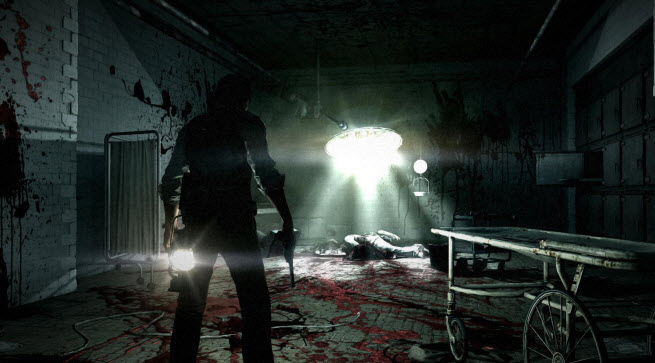Shinji Mikami has returned to the survival horror genre he pioneered with Resident Evil with a new video game, The Evil Within. This represents a major effort to seize control of a hot category of gaming as the next generation of consoles arrive.
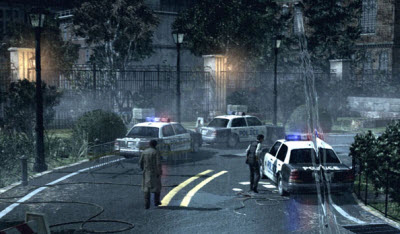
We’ve seen the preview that development studio Tango Gameworks and publisher Bethesda Softworks will show at the upcoming E3 game trade show. It’s creepy. You shift between different realities, and you’re never quite sure which is the real nightmare world. On the surface, it seems like a derivative work of Resident Evil without being called Resident Evil. But the developer tells us that The Evil Within has its own, original take on the genre. Even though it is familiar territory, the gameplay, graphics, and story are tantalizing.
Mikami is a well-known figure in gaming, and he’s associated with horror in the same way that A Nightmare on Elm Street director Wes Craven is associated with horror films. Mikami started the Resident Evil series in 1996. After a long run with the series, he left Japan’s Capcom in 2007 and worked with several startups making a variety of games. In 2010, he formed Tango Gameworks. Bethesda’s parent company, ZeniMax, acquired Tango in the fall of 2010. His team has been working on The Evil Within since that time, with Mikami as the game director.
If The Evil Within is a hit, it could spawn another enduring franchise. That would be a big deal, since Resident Evil spawned a total of 23 games, five successful live action movies, and two animated films (with two more projects in the works). That’s just part of its transmedia success, which also includes merchandise, comics, and novels. But Resident Evil itself may be weakening. The last entry in the mainline series is a huge title, Resident Evil 6 only garnered 67 out of 100 on Metacritic, the review score aggregator, when it debuted last fall. Its audience might be ready for a switch, and Mikami’s game could be a spiritual successor.
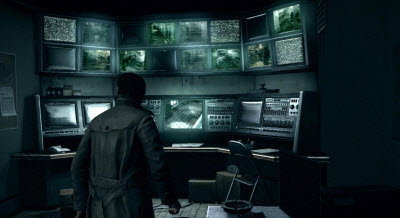
But The Evil Within has its problems, as it straddles the space between interactivity and movies. In the beginning, the drama is tense. You just sort of sit back and watch as a horrific scene slowly unfolds before you. You play police detective Sebastian Castellanos, who arrives with his partners at mental institution where something has gone wrong. The music is scary.
When introducing The Evil Within, Masato Kimura, producer, says only, “We wanted to create a scary game.”
Castellanos walks into the lobby, where a massacre has taken place and blood covers the floors and walls. He doesn’t call for backup, as he is the backup, called in by police who also lay dead on the floor. He makes a big mistake by separating from his two fellow detectives, and he pays for it, naturally.
He finds one survivor, who is out of his mind. The survivor moans, “It was him. It couldn’t be.”
Castellanos walks into a security room and views the monitors, where he sees zombie-like characters attacking people trying to flee. The zombies ambush him and knock him unconscious.

He awakes upside down, tied up and hanging like a piece of meat. (It’s a lot like Lara Croft, awakening upside down in the remake of Tomb Raider). Other bloody, dead bodies hang alongside Castellanos, like in a meat locker. A giant creature comes in and saws off a piece of meat. Castellanos figures out at that point that he should get out of there. He swings himself toward a knife. This is the first point of interactivity in The Evil Within: You have to grab the knife and cut yourself loose. Castellanos talks to himself, saying, “Shit. Where’s the key?”
Then the sneaking begins. Castellanos tries to escape by creeping around the giant butcher, who carves up victims into a bloody mess. You distract the beast by tossing something in the other direction. But an alarm betrays Castellanos, and the creature pursues him with a chain saw. You move into a room with a bunch of robot-like cutting blades. Your pursuer, obviously intelligent, turns on the blades and awaits the result. Shadows are everywhere, and dust floats in the air.
Though wounded, Castellanos escapes. Then he begins hobbling down a gray-green corridor. That image is so reminiscent of the Resident Evil games, which feature slow-moving heroes and equally slow-moving enemies. To me, it reminded me of how maddening these games can be. You want to run, but you’re wounded. You want to blast away at the enemy, but the interactivity is limited. And you want to find a path to freedom, but you can only move in a linear way, hoping you’ll find the exit that the designers have left for you.
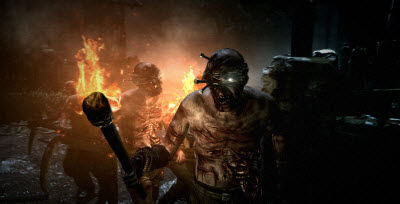
The evil beast pursues you. You hide in a locker. For some reason, despite the big blood trail you’re leaving behind you, the beast walks by as you look in fear out of the vent slits of the locker. He moves on to the next room, and you sneak out. You still don’t have a real weapon that will work against this giant. And you have no idea what is going on. That lack of context makes The Evil Within feel scarier. You don’t know what you’re supposed to do, other than escape and survive. The story unfolds slowly.
The beast roams around, looking for you. You have to sneak around low walls and stay out of its sight. At some point, you have to make a move toward escape. You creep down gloomy corridors and find that the hallways change in real time.
The developers showed another scene, later in the story, with actual combat. It’s the middle of the night, and zombies surround Castellanos. He is inside a house, and he has only moments to set up a defense. He goes into a dark cellar and finds some mine traps. He walks (yes, walks very slowly) up the stairs and sets up the mines on the windows. Then he pulls out a gun and waits for the zombies to attack. They come through the windows, setting off the exploding mines. Castellanos shoots at them, but has to flee downstairs. They trap him and kill him.
You shift from one nightmare realm to another. At some point, you come across a blood-strewn body on an operating table. And then a spider-like monster, with the body of a human zombie and the legs of a giant spider, rushes out at you and kills you.
When you come back to life, you escape out a door. Then you look around at the outside world. The city has collapsed.
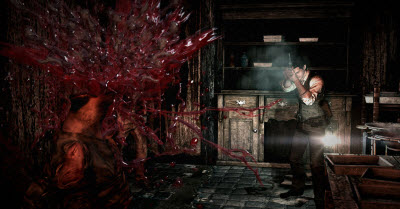
Kimura said that the fighting scene shows a more strategic kind of play than you typically see in a Resident Evil game. And so it was, but the freedom of movement still seems limited, and the camera angles are very tight as Castellanos struggled with the zombies at close range. That part is difficult to control, and it still needs work.
The graphics run on a customized version of id Tech 5, a game engine that id Software’s John Carmack created for Rage. ZeniMax is making good use of that engine, reusing it in The Evil Within, Wolfenstein: The New Order, and Doom 4. The engine has a feature dubbed MegaTextures, which streams image surfaces known as textures into memory as needed, resulting in graphics that look spectacular because they aren’t as bound by memory limitations as other textures. The lighting is first rate, with shadows and slick blood looking realistic.
Bethesda will show the game off at the upcoming E3 video game trade show in June. The title comes out in 2014 on the PC, Xbox 360, PlayStation 3, and next-generation game consoles.
VentureBeat's mission is to be a digital town square for technical decision-makers to gain knowledge about transformative enterprise technology and transact. Learn More
